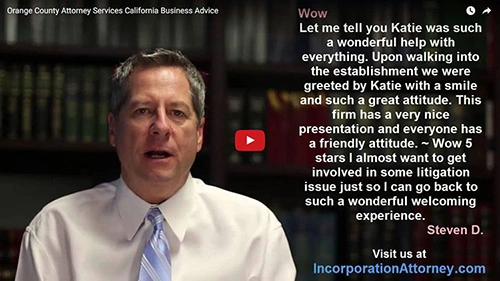Contents
- COVID-19
- Question: Should we have a COVID section in our employee handbook?
- Question: We’ve been both super busy and understaffed recently. Is there anything we can do during this time to help our employees avoid extra stress or burnout before we can hire more employees?
- Question: We have under 100 employees and are not required to mandate the COVID vaccine. We’re considering doing so anyway, but we’re also interested in other ways of encouraging our employees to get vaccinated. What incentives have been most effective?
- Question: Can we share employee vaccination status with managers so they can enforce any policies based on that information, such as masking and social distancing?
- Question: Can we ask employees for proof of COVID-19 vaccination?
- Question: I’ve heard that OSHA released new COVID-19 workplace guidance. Are there any new requirements?
- Question: Given the COVID-19 pandemic, should we cancel our annual holiday party?
- Question: Can I deny FFCRA leave to an employee who has high schoolers attending class remotely who are able to take care of themselves during the day?
- Question: Are we required to restore employees returning to work after a furlough to their original positions?
- Question: What should I do if my employee discloses that their family member or roommate has COVID-19?
- Question: We are reopening after business closure due to COVID-19. Can we bring some employees back, but not others?
- Question: We’ve had a few employees come into work sick. Can we send them home or, in the future, tell them not to come to work if they are sick?
With COVID-19 and the pandemic continuing to impact, alter, and affect businesses small to large across the US and world, we have had many HR-related questions come in. We have gathered a few below to help you navigate this changing time.
* Please keep in mind, the advice below is for a specific scenario and specific company. As California small business attorneys, we always recommend consulting with the appropriate professional about your specific HR questions.
COVID-19
Question: Should we have a COVID section in our employee handbook?
Instead of making changes directly to your employee handbook, we recommend incorporating COVID-related policy updates into a separate handbook addendum, or just a packet of policies and documents that each employee will receive. This is likely to be administratively easier to maintain and should also cut down on how much time employees spend looking for COVID-related policies when they need them. Keeping these policies separate also underscores that they are temporary and will be removed at the appropriate time.
Policies in a COVID addendum or policy kit may include a work from home policy, face-covering policy, workplace safety rules, vaccination policy, workplace sanitation procedures, and internal policy changes related to the pandemic (e.g., travel, paid time off, call-in procedure).
If you want to have a general policy related to illness that details when to stay home, whom to notify of an illness, etc., you could include that directly in the employee handbook. Just make sure that the policies there align with whatever you have included in your COVID addendum, if you have one.
Question: We’ve been both super busy and understaffed recently. Is there anything we can do during this time to help our employees avoid extra stress or burnout before we can hire more employees?
Remove nonessential work duties: For the positions that seem most stretched, make a list of tasks that could be put on hold (or perhaps reassigned). You can invite input from employees, too, but I’d recommend acknowledging that they’re overwhelmed and saying that you’ll do your best to alleviate some of the pressure. Then hold off on nonessential tasks until business slows down or you’ve increased your headcount.
Allow for flexible scheduling: If employees need to work longer hours on some days during the week, consider allowing them to work fewer hours on other days of the week. Note that some states have daily overtime, spread-of-hours, or split-shift laws.
Budget for overtime: Employees may need to work extra hours to keep up with the current demands of their job, so allow them to work overtime if you (and they) can swing it. If you’re pretty sure overtime will be necessary, inform employees of that ahead of time, so they can plan accordingly.
Ensure all equipment is fast and reliable: It’s important to identify, troubleshoot, and correct any slow or nonworking equipment issues (such as laptops, internet hardware, cash registers, or vehicles). If not resolved, these issues can slow down work and add to everyone’s stress.
Look for ways to automate: Consider whether any of your employees’ manual and time-consuming tasks could be eliminated or simplified with the use of new or different technology.
Increase safety protocols: Employee absences related to COVID have created a significant strain for many employers during the pandemic. Shoring up your safety protocols may reduce the risk of COVID-related absences because of sickness or exposure. Depending on your circumstances, examples include improving ventilation, encouraging or requiring vaccination, requiring employees to wear masks, and allowing employees to work remotely when possible.
Question: We have under 100 employees and are not required to mandate the COVID vaccine. We’re considering doing so anyway, but we’re also interested in other ways of encouraging our employees to get vaccinated. What incentives have been most effective?
Incentives are a good idea if you don’t want to mandate the COVID vaccine.
Bonuses have been shown to convince at least some hesitant employees. You could, for example, establish a policy that every vaccinated employee gets $100. If you go the monetary incentive route, you’ll want to offer alternatives (different safety measures like wearing an N-95 or keeping extra distance) that an employee who is unable to be vaccinated can follow in order to receive the incentive.
Another way to encourage the vaccine is to allow employees to get it during the workday and offer paid time off while they recover. This option may be best for employees who have avoided the vaccine mostly out of concern for potential side effects and being unable to work because of them.
Finally, you can remind your employees that the sooner more people get vaccinated, the sooner we’ll have this virus under control and be able to stop having to wear masks and practice social distancing. No one likes these practices or wants them to continue for long.
If these incentives don’t work to your liking, mandating the vaccine is another option, even if you’re not required to do so by the new rules.
While anonymized information is okay to share widely—e.g., “80% of our employees are vaccinated!”—each employee’s vaccination status should be treated as confidential, even if the fact that they are wearing a mask to work seems to reveal their status publicly.
Question: Can we ask employees for proof of COVID-19 vaccination?
You should ask employees to provide proof that only includes their name, the date of vaccine (and whether first or second dose, if applicable), and, if necessary, their provider’s name. Asking for anything more than that could turn a simple request into a disability-related inquiry under the Americans with Disabilities Act (ADA) and should therefore be avoided.
You should also ensure that this information is kept confidential, along with any explanations about why an employee is not vaccinated. We recommend against asking employees why they are not vaccinated, but if you are mandating vaccines, this will likely come up when one or more employees indicate that they need an exception to your policy.
Finally, make sure that you don’t discriminate against employees who aren’t vaccinated because of their religious beliefs or disabilities. Title VII of the Civil Rights Act protects these characteristics and requires that you make reasonable accommodations for employees whose religious beliefs or disabilities prevent them from complying with your policies.
Question: I’ve heard that OSHA released new COVID-19 workplace guidance. Are there any new requirements?
In a nutshell, OSHA recommends that employers and employees implement a COVID-19 prevention program that includes the following elements:
- Masks and social distancing
- A hazard assessment
- Measures to limit the spread of the virus
- Ways to identify (and send home) sick employees and policies for employee absences that don’t punish workers for staying home when sick
- Communication of coronavirus policies and procedures in both English and the primary language of non-English speaking workers
- Protections from retaliation for workers who raise coronavirus-related concerns.
If you’re interested, you can learn more about the program here.
Question: Given the COVID-19 pandemic, should we cancel our annual holiday party?
We understand, however, that canceling this event could be disappointing to you and your employees. One way to spread joy, but not the virus, would be to host a virtual party. You could provide gift cards to local eateries or food delivery services, organize a home decorating or ugly sweater contest, and facilitate interactive games.
You could also offer employees the option of having the cost of the gift card they would otherwise receive donated to a charity (while still having the virtual shindig). Or, if a virtual party isn’t feasible or employees aren’t in the mood, you could donate the entire cost of the celebration to a worthwhile organization. If you take either charitable approach, we recommend allowing employees to help you choose the charities, so they feel like they’ve participated in the giving.
Question: Can I deny FFCRA leave to an employee who has high schoolers attending class remotely who are able to take care of themselves during the day?
Question: Are we required to restore employees returning to work after a furlough to their original positions?
If you need to restructure their position, it will be helpful to explain why that was necessary. People are generally much more accepting of change if they understand it, and less likely to claim discrimination if you’ve given them your business-related reason for the decision.
Question: What should I do if my employee discloses that their family member or roommate has COVID-19?
Because COVID-19 is widespread in so many communities, the CDC recommends that everyone practice social distancing, be alert for COVID-19 symptoms, and follow CDC guidance if symptoms develop.
Remember to maintain the confidentiality of all employees’ medical information, which includes symptoms as well as the lack of symptoms.
Question: We are reopening after business closure due to COVID-19. Can we bring some employees back, but not others?
Question: We’ve had a few employees come into work sick. Can we send them home or, in the future, tell them not to come to work if they are sick?
Keep in mind that it is important that everyone has a clear understanding of what is grounds for sending an employee home sick and that it is applied fairly to everyone. Also, in the event that you send an employee home sick, we would strongly recommend giving them the option to use any accumulated sick or vacation time.
For these reasons, a written policy to that effect would probably be helpful. That way sick employees know what is expected of them and can save themselves the trip to work.
Take note, however, that some states require reporting time pay, so if you send a non-exempt employee home after they have reported for work, you may still owe them half of their scheduled shift. Additionally, exempt employees in all states must be paid for the full day of work, even if sent home early due to illness, if any work at all was performed that day, including work from home.
To deter sick employees who want to work from coming in and spreading their germs, you might consider offering paid sick leave. If employees don’t have to worry about a smaller paycheck when they take a sick day, they won’t feel so compelled to work when under the weather.








